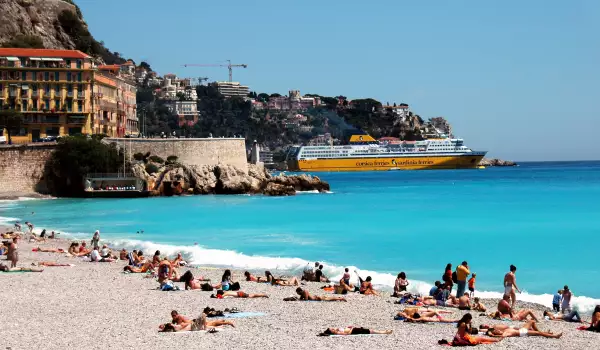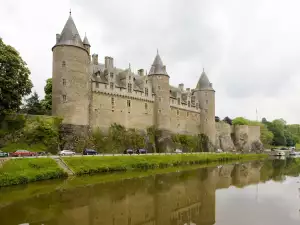Nice

Nice is the birthplace of the great Italian Giuseppe Garibaldi, who actively participated in its union and the Italian Revolution. To this day the atmosphere in Nice has a thin thread of intolerance. As a result, Nice seemed to be trying to distance itself from any norms and stereotypes by constantly seeking to dictate fashion, either in design, nightlife or anything. However, of the Frenchmen never lacked confidence, which explains the "vagaries" of this French town. Nice has special beauty and charm, making it one of the most popular holiday destinations in France.
Nice is one of the best and most important resorts of the Mediterranean. The ever-smiling sunny city is located in south eastern France, in the region Provence-Alpes-Cote d'Azur. Nice’s Population itself about 345 000 people, but with the number of suburban residents of this beach town reaches nearly a million. The climate in Nice is very nice. This is due to the surrounding Alpes- Maritimes, which protect it from cold winds. Nice is the largest town located on the French Riviera (Côte d'Azur), but for the whole country, Nice ranks sixth in size.
Nice is called the beautiful city. Its original name was "Nicæa fidelissima civitas", ie. "Nice – the Very loyal city", but when Nice became part of France, the motto was shortened in 1860 to "Nicæa civitas". The capital of the French Riviera is situated in the Bay of Angels.

The history of Nice begins in the fifth century BC when it was founded by the Greeks as a trading center under the name Nika. Three centuries later, local territories are conquered by the Romans. In Nice you can see preserved Roman baths and arenas. In the 11th century Nice joined the principality Provence, in the 14th century it joined the Savoy. In the early 19th century Nice entered the composition of Piedmont and Sardinia, and only since 1860 is kept as an independent city in France.
There are many interesting places that you should go see in Nice. Your walk can start from the main square, which is located in the centre of Nice. It was built in 1835, and east of town is the old area of town, better known as Old Nice. A stroll around the old buildings will charm you with the mixed Muslim-Christian architecture. Here, among the narrow and curved streets you can visit one of many restaurants that are emblematic for Nice. Most of them offer local specialties that are able to satisfy every taste.
From the early 20th century Britons began to come on holiday here, they were so fascinated by the Old town of Nice that they stayed here all winter. The famous 7-mile shore, received the name "English Alley" (Promenade des Anglais). It was built by the Englishman Lewis Way in 1830 for afternoon walks among exotic palms. Along this shore you can see some interesting examples of architecture palaces and rococo villas of the Belle-Epoque period. Here are the most famous hotels in the city.
The city has 18 museums and galleries - museums Matisse, Marc Chagall, Renoir, Auguste Rodin and many others. Each year 13 to 25 February is time of the famous Nice carnival. Every winter masquerade processions, parade of flowers, concerts and fireworks attract more than 1, 2 million viewers. The parade of flowers for example was celebrated for the first time in 1876 near the sea coast and has since passed the English border. From a small and humble event over the years in the carnival of flowers in Nice becomes a prestigious show, which hosts about 4-5 thousand flower stalks. A special tribute is made to mimosa, which is a symbol of Nice.















